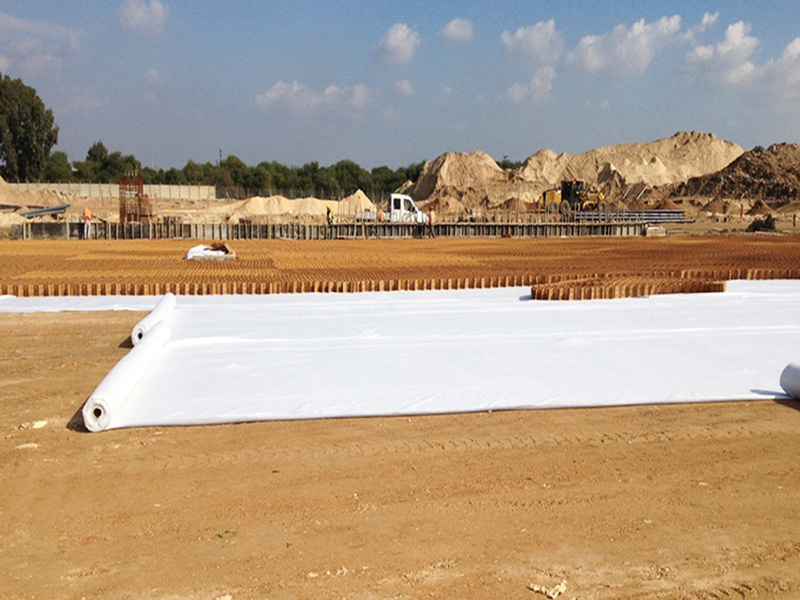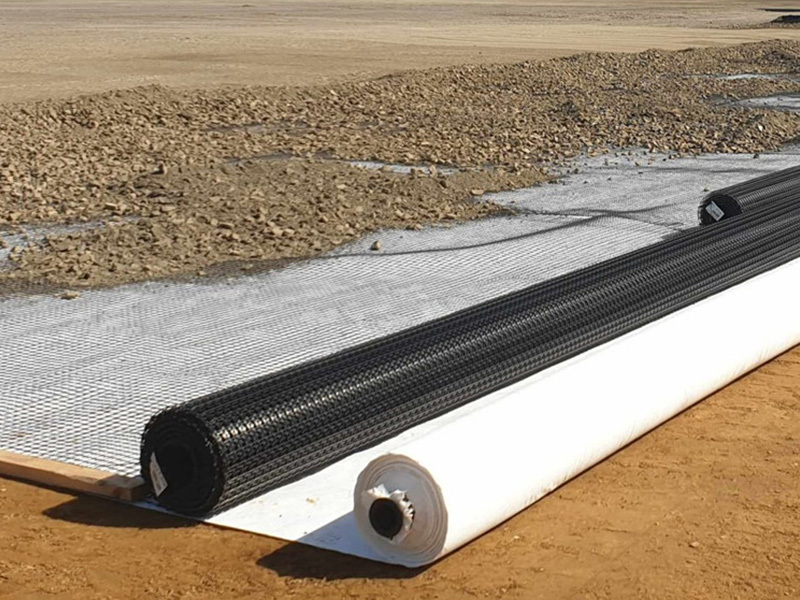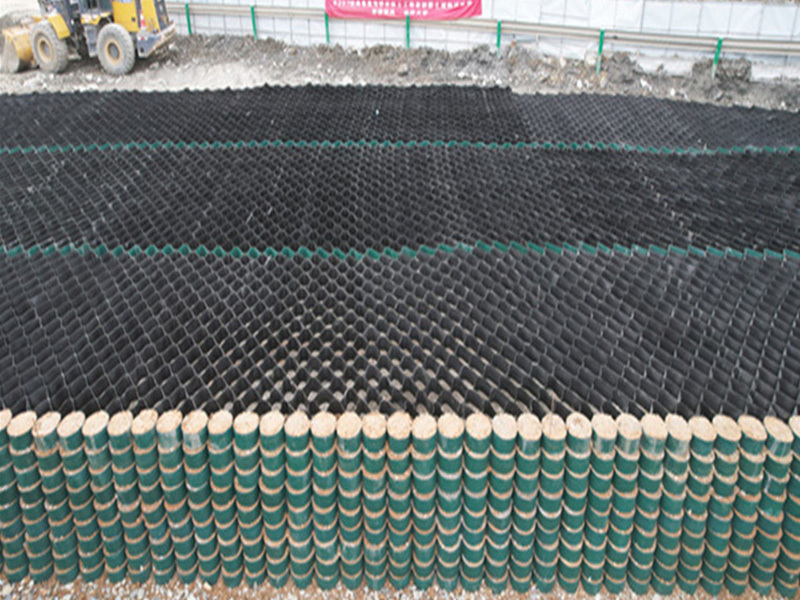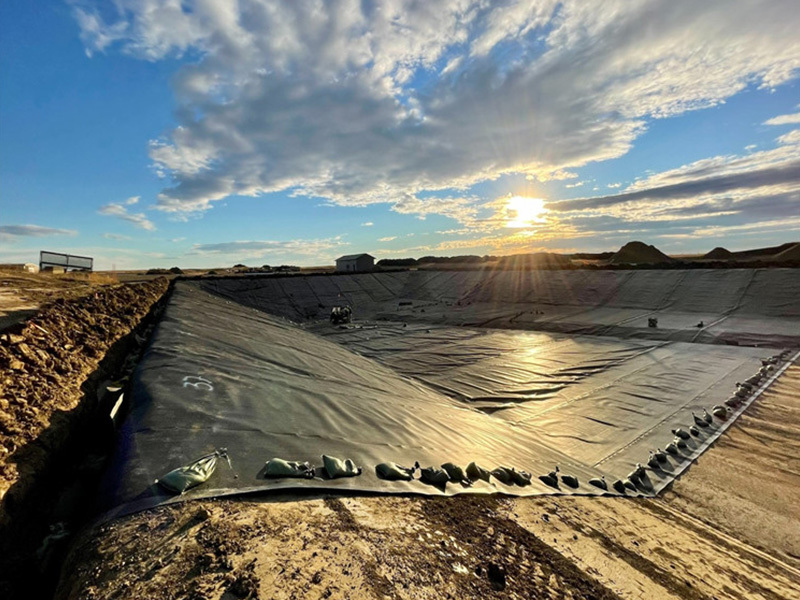Geotextile Reservoir Anti-Seepage Construction Guide
Release time:
Jul 19,2023
Geotextile Reservoir Anti-Seepage Construction Guide
1. Introduction
Geotextile-based anti-seepage systems provide an economical and effective solution for water containment in reservoirs. This construction method combines geotextile fabrics with impermeable membranes to create durable hydraulic barriers that prevent water loss through seepage while maintaining structural stability.
2. System Components
Primary Layer: Non-woven geotextile (200-500g/m²) for protection and drainage
Barrier Layer: HDPE/LLDPE geomembrane (0.75-2.0mm) as primary water barrier
Ancillary Materials:
Bentonite mats (for secondary containment)
Drainage composites (where required)
UV-protective coatings (for exposed applications)
3. Construction Methodology
3.1 Site Preparation
Subgrade Treatment:
Remove all vegetation and sharp objects
Achieve 95% compaction density
Create smooth transitions (1:3 slope maximum)
Install cutoff trenches at perimeter
Quality Verification:
Conduct sand cone tests for compaction
Verify moisture content (±2% of OMC)
Laser-grade check for surface evenness
3.2 Geotextile Deployment
Roll Placement:
Unroll parallel to slope direction
Maintain 50cm minimum overlap at seams
Allow 2-3% slack for thermal movement
Seaming Techniques:
Needle-Punched: For non-critical applications
Thermal Bonded: For structural seams
Chemical Adhesive: For field repairs
3.3 Geomembrane Installation
Welding Protocol:
Double-track hot wedge seams (20mm width)
Test every 100m with vacuum box (25kPa)
Air channel testing for critical zones
Anchoring System:
Anchor trench dimensions: 1m×1m
Backfill with CLSM (Controlled Low-Strength Material)
3.4 Protection Measures
Armor Layer:
30cm gravel (D50=20mm) for submerged areas
Concrete blocks for wave-impact zones
Vegetative Cover:
Erosion control mats on slopes
Root barriers near membrane
4. Quality Assurance
4.1 Material Testing
Geotextile:
Grab strength ≥800N (ASTM D4632)
Puncture resistance ≥400N (ASTM D4833)
Geomembrane:
Tensile strength ≥25MPa (ASTM D6693)
Tear resistance ≥125N (ASTM D1004)
4.2 Field Testing
Seam Peel Test: 1 test per 150m (min. 30N/mm)
Spark Testing: 100% coverage for exposed seams
Leak Location Survey: Electrical method for final verification
5. Maintenance Protocol
Annual Inspections:
Underwater camera surveys
Water balance calculations
Repair Methods:
Peel-and-stick patches for pinholes
Extrusion welding for seam failures
Sectional replacement for >5% damage
6. Performance Metrics
Seepage Rate: <0.5 l/m²/day (for potable water)
Service Life: 25+ years (submerged)
UV Resistance: 10-15 years (exposed)
7. Case Study Data
Three Gorges Project: 1.2 million m² installed
Lake Remediation (California): 65% seepage reduction
Agricultural Reservoirs (India): 90% water retention improvement
8. Conclusion
Geotextile-based anti-seepage systems offer reservoir engineers a technically advanced yet cost-efficient solution. Proper installation following these protocols ensures long-term water conservation with minimal maintenance requirements. Recent advances in conductive geotextiles now enable real-time integrity monitoring, representing the next evolution in seepage control technology.
Key Advantages:
40-60% cost savings vs traditional concrete
3-5x faster installation
Superior crack-bridging capability
Environmentally neutral materials
For critical projects, consider hybrid systems combining geotextiles with GCLs (Geosynthetic Clay Liners) for redundant protection against leakage.
News
Geocell Technology for Slope Protection: Mechanisms and Applications
Geocell Technology for Slope Protection
HDPE Geomembrane Waterproofing Construction for Reservoirs
Waterproofing Construction for Reservoirs








